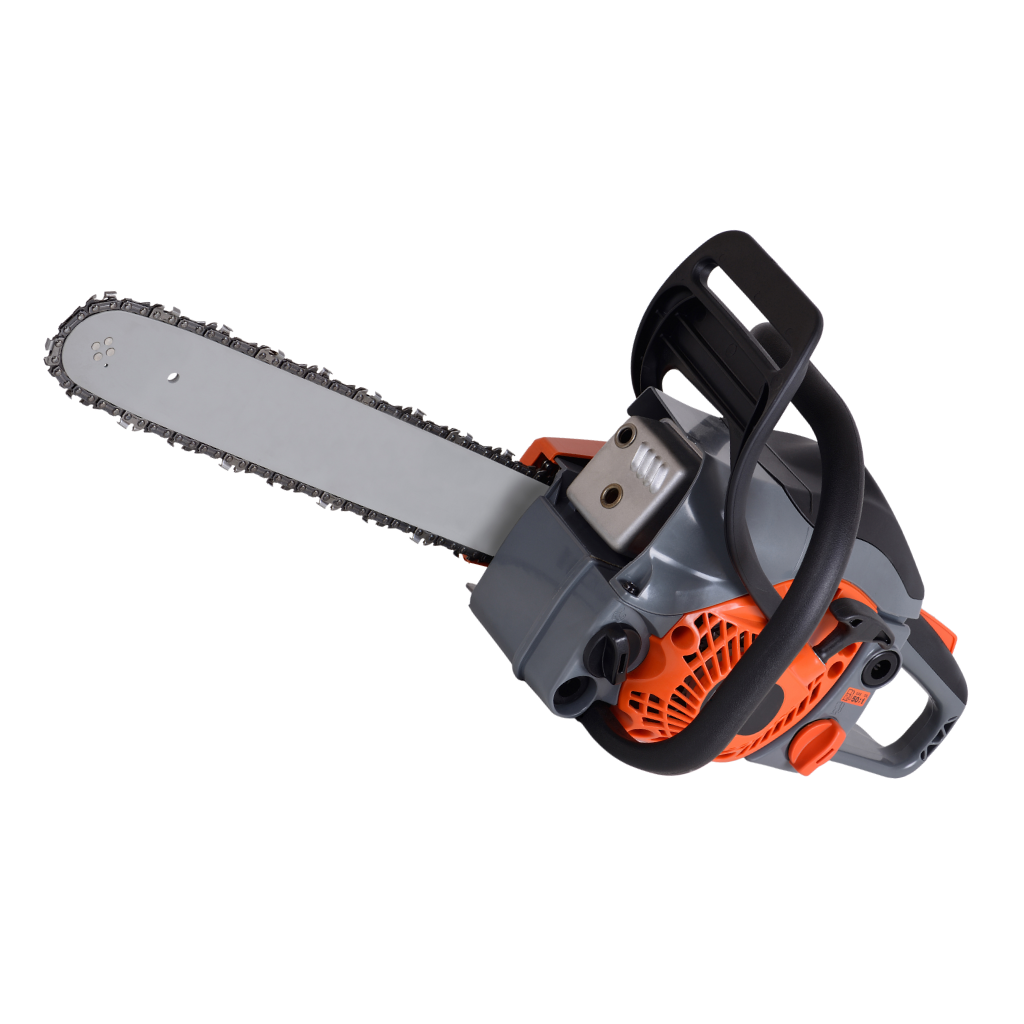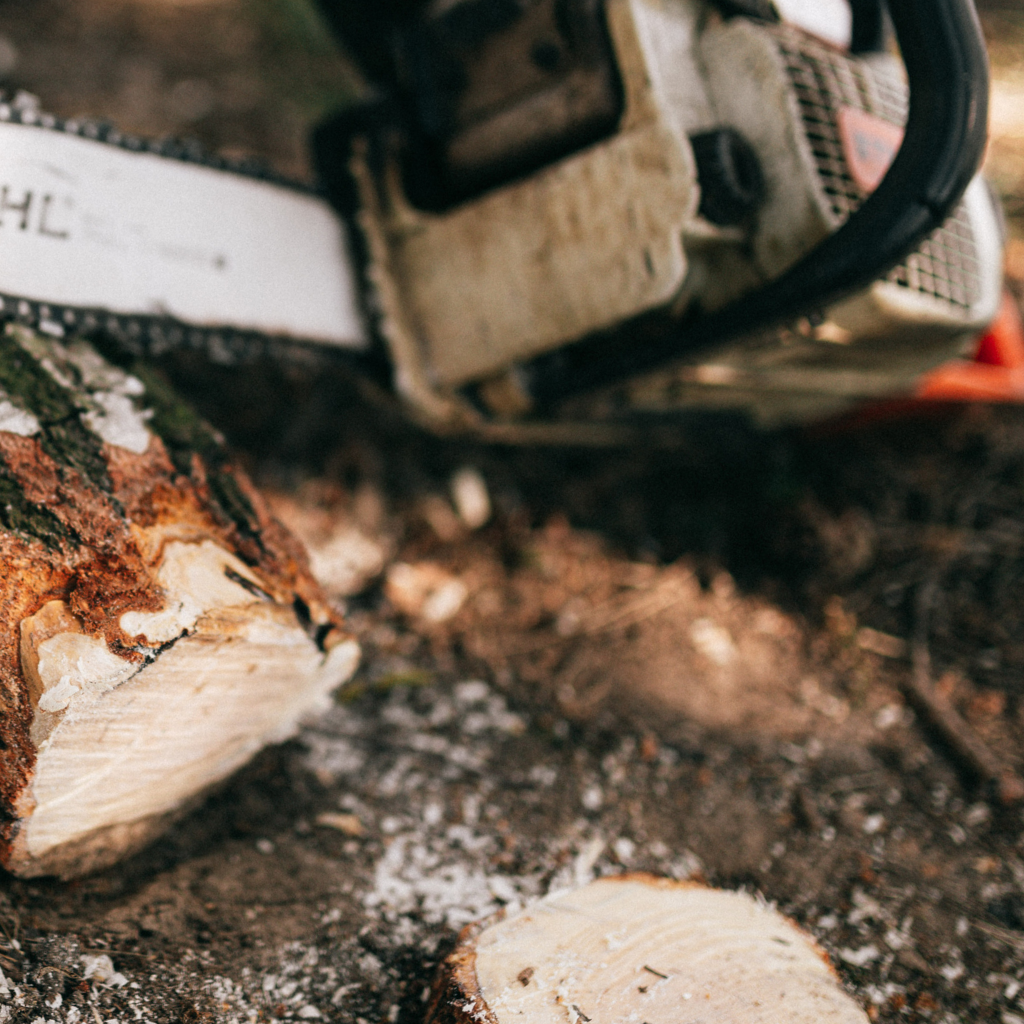How To Unflood A Chainsaw

Key Takeaways
- Don't overly prime the chainsaw and just wait if you do
- Preparing for unflooding and taking initial troubleshooting steps can save you time and frustration.
- With the right procedures, unflooding a chainsaw is a simple process that you can do yourself.
- When in doubt, just let the chainsaw sit
If you're a frequent chainsaw user, you've probably experienced a flooded chainsaw at some point. This is when the engine becomes flooded with fuel and won't start.
It can be frustrating, but the good news is that unflooding a chainsaw is a relatively simple process that you can do yourself. In this article, we'll go over the steps you can take to unflood your chainsaw and get it running again.
We'll also cover some initial troubleshooting steps you can take to identify the problem and prepare for unflooding. By the end of this article, you'll have the knowledge you need to quickly and safely unflood your chainsaw and get back to work.
Before we dive into the unflooding procedures, it's important to understand why chainsaws become flooded in the first place. Knowing the cause can help you prevent it from happening in the future.
Why Chainsaws Flood
If you have ever tried to start your chainsaw and it just won't turn on, there is a possibility that it is flooded. Chainsaw flooding happens when there is too much fuel in the combustion chamber, making it difficult for the spark to ignite the fuel mixture.
Excessive fuel in the combustion chamber is likely because you primed the chainsaw with too much fuel. But don't fret. In this section, we will explore the causes of chainsaw flooding and the signs to look out for.
Keep in mind that chainsaw model matters. A flooded stihl chainsaw might be different than a flooded husqvarna. The same general concepts apply but just keep it in mind. Starting instructions will vary between brands.
Causes of Flooding
There are several reasons why a chainsaw can become flooded. One of the most common reasons is an excessively rich fuel mixture. This can happen when the carburetor is not adjusted correctly, or when the air filter is dirty and clogged. Another reason could be a faulty spark plug that is not providing enough spark to ignite the fuel mixture.
Another possible cause of flooding is when the chainsaw is tilted too far forward or backward during use. This can cause excess fuel to flow into the cylinder, leading to a flooded engine. Additionally, leaving the chainsaw idle for an extended period can cause fuel to accumulate in the combustion chamber, leading to flooding.
Signs of a Flooded Chainsaw
If your chainsaw is flooded, you will typically notice that it is difficult to start, and the engine may not turn over at all. You may also notice a strong smell of gasoline coming from the chainsaw. When you try to start the chainsaw, you may hear the engine turning over but not firing up.
To check if your chainsaw is flooded, remove the spark plug and inspect it. If the spark plug is wet with fuel, then your chainsaw is flooded. You can also check the air filter to see if it is dirty and clogged, which can cause a rich fuel mixture and flooding.
In conclusion, understanding chainsaw flooding is crucial for any chainsaw owner. By knowing the causes and signs of flooding, you can take the necessary steps to prevent it from happening and ensure that your chainsaw is always in good working condition.

Preparation for Unflooding The Chainsaw
We are about to go through everything you can do to unflood a chainsaw, but at the end of the day, the best way to unflood a chainsaw is to just put it down and walk away for a couple minutes. Come back then try to start your chainsaw again.
Before attempting to unflood a chainsaw, it is important to take some necessary precautions to ensure your safety and the safety of those around you. This section will cover the necessary preparation steps before unflooding your chainsaw.
Safety Precautions
When working with a chainsaw, it is important to take the necessary safety precautions to avoid injury. Before unflooding your chainsaw, make sure to wear appropriate safety gear such as safety glasses and gloves. This will protect your eyes and hands from any debris that may fly off during the process.
Additionally, make sure to work on a flat, stable surface to avoid any accidents. Always keep the chainsaw away from your body and make sure to turn off the chainsaw before starting any maintenance work. Chain brake on!
Make sure to have all the necessary tools and materials before starting the unflooding process. This will save you time and make the process smoother.
If you are struggling with a flooded chainsaw, there are a few initial troubleshooting steps you can take to get it up and running again. These steps can help you identify the root cause of the problem and determine the best course of action.
Check the Air Filter
The first thing you should do is check the air filter. A clogged air filter can prevent air from flowing through the carburetor, which can cause the engine to flood. To check the air filter, remove it from the chainsaw and inspect it for any signs of dirt or debris. If it looks dirty, clean it with compressed air or replace it with a new one.
Inspect the Spark Plug
Another possible culprit for a flooded chainsaw is a fouled spark plug. A spark plug that is covered in oil or dirt can prevent the engine from starting. To inspect the spark plug, remove it from the chainsaw and examine the electrode. If it looks dirty or damaged, clean it or replace it with a new one.
Assess the Fuel Condition
Lastly, you should assess the fuel condition. Bad fuel or fuel that has been sitting in the chainsaw for too long can cause the engine to flood. To check the fuel, remove the fuel cap and inspect the fuel for any signs of contamination or corrosion. If the fuel looks bad, drain it and replace it with fresh fuel.
By following these initial troubleshooting steps, you can identify the root cause of the problem and take the necessary steps to get your chainsaw up and running again. Remember to always take the necessary safety precautions when working with power tools.
Unflooding The Chainsaw
If you've accidentally flooded your chainsaw, don't panic. With the right steps, you can get it running again. Here are the unflooding procedures you need to follow:
Removing Excess Fuel
The first step is to remove any excess fuel from the combustion chamber. To do this, you need to remove the spark plug and pull the starter cord a few times. This will allow the fuel to evaporate and escape from the combustion chamber.
Cleaning the Spark Plug
Next, you need to clean the spark plug. Remove the spark plug and clean it with a wire brush or a piece of sandpaper. This will remove any fuel or carbon deposits that may be preventing the spark plug from working properly.
Drying the Combustion Chamber
Once you've removed the excess fuel and cleaned the spark plug, you need to dry the combustion chamber. You can do this by using compressed air to blow out any remaining fuel or moisture.
Adjusting the Carburetor
If your chainsaw is still not starting, you may need to adjust the carburetor. This is the part of the chainsaw that mixes air and fuel to create the combustion necessary for the engine to run. Adjusting the carburetor can be a complicated process, so it's best to refer to your chainsaw's manual for specific instructions.
By following these unflooding procedures, you can get your chainsaw running again in no time. Remember to always be careful when working with chainsaws, and to wear appropriate safety gear such as gloves and eye protection.
Starting A Flooded Chainsaw
If your chainsaw has been flooded, it can be frustrating to try to start it. However, with the right technique, starting a flooded chainsaw can be done quickly and easily. Here are some tips to help you get your chainsaw running again.
Modified Starting Procedure
When starting a flooded chainsaw, it is important to follow a modified starting procedure. This involves turning off the choke and pulling the starter rope several times to clear out any excess fuel. Once you have done this, turn the choke back on and try to start the chainsaw again.
Use of the Starter Rope
Using the starter rope correctly can also help you start a flooded chainsaw. When pulling the starter rope, make sure to pull it all the way out and then let it snap back in. This will create the necessary spark to ignite the fuel and start the chainsaw.
When to Use the Choke
The choke is an important tool when starting a chainsaw, especially when it has been flooded. However, it is important to know when to use it. When starting a flooded chainsaw, turn the choke in the run position to help draw in extra air and fuel. Once the chainsaw starts to run, turn the choke off to allow it to run smoothly.
Following these tips will help you start a flooded chainsaw quickly and easily. Remember to take your time and follow the correct starting procedure to avoid damaging your chainsaw. With a little practice, you will be able to start your chainsaw with ease, even when it has been flooded.
Final Say On Unflooding Your Chainsaw
Everyone will get a flooded chainsaw at some point. It's no big deal just don't try to force it to start the chainsaw and you should be good to go. Best way to unflood is actually not to flood the chainsaw in the first place!

Carl Anderson
Carl Anderson is an avid outdoorsman with a keen interest in writing about and reviewing tools. He has over 20 years of writing experience and the only time he isn't feverishly typing away at his computer is when he's outside in nature working on his projects. You can learn more about him here.
Join our community!
Join to receive guides, insights, and the latest gardening deals!
